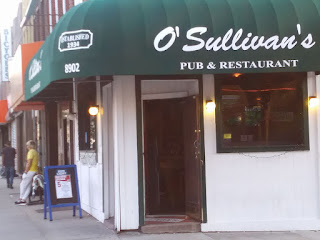A Streetcar Named Confusion
My mother used to speak fondly of the streetcar that used to run through our neighborhood in Bay Ridge. In particular, she told us, that it was comfortable, warm, and she always got a seat.
Trolleys were in a big item our borough at one time. In the early 20th century, Brooklyn's streetcar system was one of the most comprehensive in the U.S. and by 1930, nearly 1,800 trolleys were traveling along the streets of Kings County.
Our hometown baseball team was originally named the Brooklyn Trolley Dodgers, which should give you an idea of how prevalent they were at one time.
Well, that all came to a screeching halt in our neighborhood on Aug. 12, 1948, which was a few days before my mother’s birthday, when the trolley was replaced by the bus.
And Mom said that the bus was cold, crowded and most times, she had to stand. Hardly what you’d call progress. Then the Dodgers left Brooklyn for L.A. 9 years later—in the year I was born.
The trolley story comes to mind after I stopped the McDonald’s on Broadway and Courtland Street last week.
I’m trying to watch my weight and cholesterol intake, so I’ve eaten at McDonald’s in ages.
But I was early for a hearing test and craving a Diet Coke (for shame!) so ducked inside and became immediately disoriented.
The place was packed but there were lines at the front counter. Instead, people were either using their phones or one of the ordering kiosks.
There was exactly one person at the counter, unlike the row of cashiers I was expecting. This young woman was busy calling out order numbers and handing out bags to waiting patrons.
I was sure what to do. Using an app or the kiosks to buy a soda seemed ridiculous. But I didn’t see anyone lining up to place their orders.
“Can I just order something from you directly?” I asked the cashier.
“Of course,” she said.
I’m sure the company is saving money with this technology, but it somehow made eating at McDonald’s even more impersonal.
End of the Line
Upstairs I looked around, intrigued by all tourists from so many different countries who were visiting our city, but disappointed we were all patronizing this international junk food cartel.
I saw two young Frenchwomen—sisters, I believe—who were sitting right next to each other, but staring at their phones.
I know I’m geezer and people have been doing this for years now—myself included—but still, it looked so odd and unpleasant.
A study in The Journal of the American Medical Association found that sixth and seventh graders who habitually check Facebook, Instagram, and Snapchat could experience changes in their brains’ sensitivity to social rewards and punishments.
And another study conducted by University of Delaware and Florida State University professors of 1,459 middle-schoolers ages 11 to 15 found that academic achievement decreased as the use of Facebook, Instagram, Snapchat, and X increased.
Kids with less frequent Facebook and Instagram use—as well as high-quality mother-adolescent communication—had better grades.
I even found myself agreeing with Bill Maher, who has irritated me with his ridiculous “wokeism” rants, when he devoted his recent New Rule segment to the concept of Reverse Improvement, or RI, where a tech update that no one wants is introduced and promptly makes things worse.
His example was watching a football game on streaming TV, which, he said, forces him to sit through commercials and becomes unavailable one day after the game is shown, as it “disappears like an FBI agent investigating Trump.”
So, if you want to watch a football game on a streaming service, you have to watch it in real time and put up with all the ads—just like we did in the past.
Maher also hit on the bogus notion that artificial intelligence is going to free up employees “to do more important things.” No, AI is going to free companies to fire people.
Now, economist and MIT professor Daron Acemoglu has said that only 5% of jobs can be replaced or assisted by AI within the next 10 years.
However, 41% of companies around the world plan to reduce their workforce by 2030 due to AI, according to the World Economic Forum's Future of Jobs Report, since it makes it easier to automate certain tasks, cutting out the need for some human employees.
On the bright side, streetcars have been making a comeback with towns like Portland, Seattle, and Salt Lake City reintroducing light rail systems.
And New York is working on the Interborough Express that’s supposed to join Brooklyn and Queens and will include a stop on Fourth Avenue in Bay Ridge.
Mom would be so happy.





Comments
I can’t even with all these kids on their phones. It makes me sad when I see a toddler with an iPad in the cart at the grocery store. And I had no idea about the lack of counter service at fast food places. Progress is seeming more and more like the reverse improvements Maher is speaking about.
It's been a while since I've been inside a fast food eatery, but the scene you described with people staring at their devices is sadly true of most places.
I rode the cable cars in San Francisco many years ago and Seattle has a bus/street car service, where the bus picks up passengers out of town and then gets on to rails upon entering the city.
I really feel out of place in these wired establishments. It's like we're turning into androids.
And the Trolley Song isn't a bad ear worm!
That's amazing about Akron. I think most American cities had a trolley service at one time.
Point well taken about cell-phone toting toddlers. It ain't good for them and it ain't good for the rest of us.
And I've got no use for these hi-tech eateries.
Later!